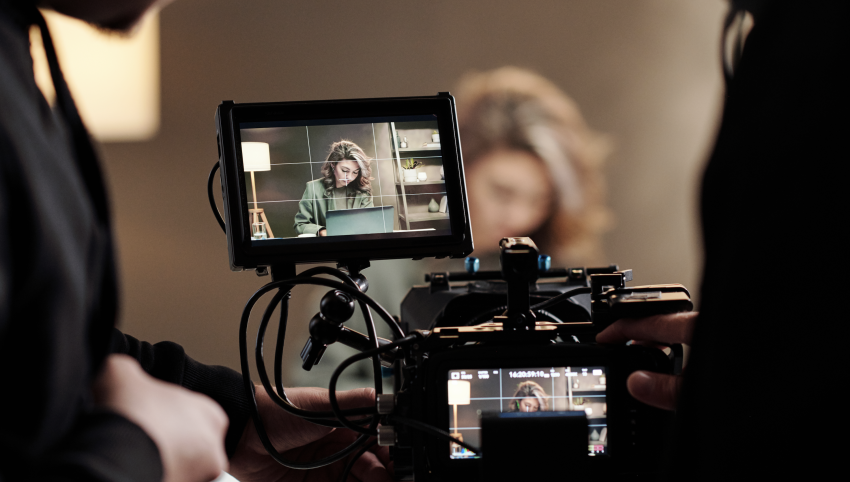The Video production industry isn’t a universal technique; it’s made up of a variety of varieties, each having an individual function. From generating stories about brands to promoting items, let’s look at the various types of video currently in use.
1. Brand Video
Brand videos are the storiestellers who convey the essence and value of an organization. Consider them the cinematic introduction of the world of your brand. They go beyond the selling of products, they tell the story, thereby creating an emotional bond with the people watching them.
For a successful brand video, you require a well-written script, appealing visuals, and an in-depth grasp of the brand’s personality. Take Nike’s “Dream Crazy” campaign – the brand’s video that not just showcased its items but also reinforced an effective social message that earned it wide praise. Brand videos can be found on the company’s websites, social media channels, and even in presentations, aiming at the widest audience.
2. Product Video
If a photo is worth 1000 words, then the value of a product video is one million. The videos highlight your product by highlighting the benefits, features, and how it is integrated to the lives of your customers. It doesn’t matter if it’s a stylish tech device or a warm sweater, these videos give an intimate look at the product, answering the elusive question “Why should I buy this?”
To make a successful product video, you must focus on clarity, highlight distinctive characteristics, and illustrate the real-world application. What’s the significance? 90% of customers believe that videos on products help to make buying choices. Video products perform well on e-commerce sites, company websites, as well as social media, focusing on potential buyers.
The stage prior to production for this kind of video is planning the presentation of the product and then production which is where the filming takes place and post-production polishes the footage to make it more effective.
3. Event Videos
Ever thought of capturing what you love about an occasion to broadcast it to the world? That’s why video clips of events shine. They document events like weddings, conferences, concerts and much more, capturing emotions and atmosphere.
To make a memorable event video, you’ll need experienced videographers, the appropriate equipment, and a keen ability to capture candid moments. Videos from events serve not just as memorabilia, but also serve as promotional tools for events to come. The audience for event videos is via social media, websites for events and other promotional materials.
4. Animated Videos
Animated videos bring the imagination into the real world, rendering difficult concepts digestible and fun. These videos employ motion graphics, animation, and storytelling to communicate messages. They can be being used to teach in explaining concepts, or just adding a little flair to the content.
To make an animated video You need talented animators, clear script, and the ability to make visuals more lively. Think of the explainer video created by Dropbox short visual, appealing and crystal clear in communicating complicated concepts. The animated videos are on corporate web pages, Facebook sites, along with educational and other platforms which reach different audience.
5. Social Media Videos
Videos on social media are short videos that require attention in this day and time of scrolling. The short-form videos are designed to meet the ever-shrinking attention spans of the online audience. From engaging clips to informative small snippets of content Social media videos perform well on platforms such as Instagram, TikTok, and Facebook.
To make a shareable media video, clarity is the most important factor, along with captivating images and an unambiguous message. Did you realize that videos on social media get 1,200 more shares than images and text together? Social media videos are made to share, embedding them into feeds from a variety of users.
For this kind of film, the preproduction includes creating content that is concise, followed by production in which short, entertaining videos are produced and then post-production makes sure they’re optimized for social media platforms.
In the past, we’ve looked at the different types of video you may be asking, “How does this differ from filmmaking and videography?” Come along in the next part in our exploration of the differences and learn about the distinctness that defines these people’s methods.
Related: Bringing Your Story to Life through videoproductie bedrijf
The Differences Between Video Production, Filmmaking & Videography
Let’s get started on a journey into the thrill of filmmaking, production and videography. We’ll explore the different aspects which distinguish them.
Video Production
It’s the procedure that takes care of every step of creating content. Imagine it as a chef in the kitchen. He is not only in charge of making a meal, but also designing the presentation, deciding on the best ingredients, and creating an enjoyable dining experience. The production process encompasses everything from planning to shooting editing, and finally the unveiling of the final piece.
Filmmaking
The term “filmmaking” often conjures imagery that are reminiscent of Hollywood and epic tales. In a more scientific sense, filmmaking is the art of making films on real film stock. It’s like writing a novel and writing the most epic novel. Filmmaking is the process of creating a feature length film from the initial scripting stage to cutting the film, typically featuring complex storytelling techniques as well as cinematic methods.
Videography
When video is considered to be the chef in chief videography is the artistry of fingers in front of the camera. It’s the art of recording footage that is detailed. Imagine a painter creating an image on canvas – this is the essence of videography. Videographers could be the unspoken heroes of weddings, expertly recording moments, but videography is a more extensive process that is more professional and efficient.
Read more:

